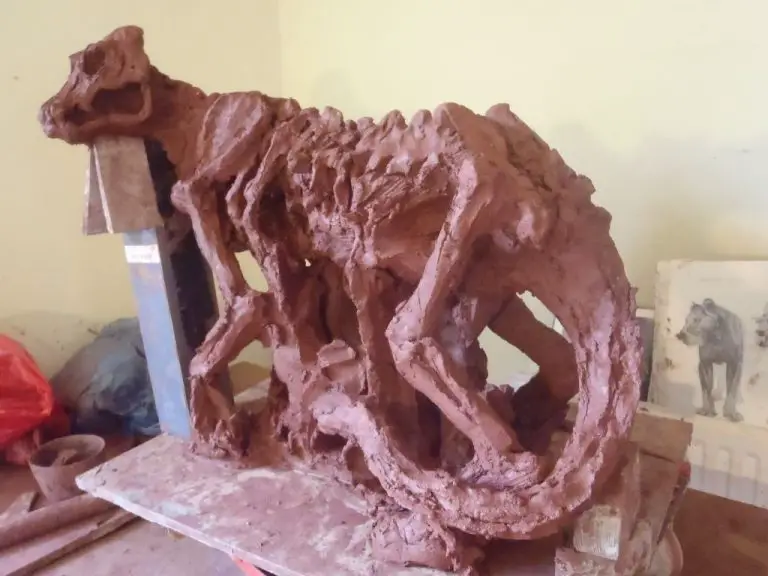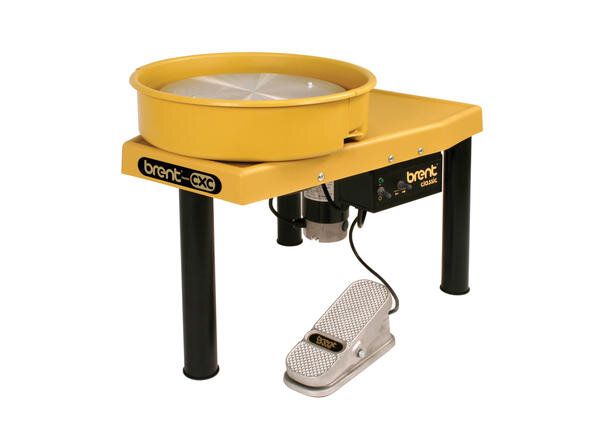What Is The Maximum Temperature For The Evenheat Kiln?
Evenheat kilns are electric kilns manufactured by Evenheat Kiln
with headquarters in Wisconsin, USA. They produce a variety of kiln models for uses including glass fusing, heat treating, ceramic firing, metal clay, and knife making. Evenheat kilns allow precise control over temperature profiles to achieve consistent results. Their kilns feature quality construction with insulation, heating elements and controllers chosen for dependability and long kiln life.
Maximum Temperature Capabilities
The Evenheat kiln is capable of reaching very high temperatures depending on the specific model. According to the technical specifications listed on the Evenheat website, the maximum temperature capability ranges from 2,300°F (1,260°C) to 2,800°F (1,540°C) across their various kiln models.
For example, the Evenheat HF Series top out at 2,300°F (1,260°C) for the HF1418 model and 2,400°F (1,316°C) for the larger HF2323 model as per the HF technical specifications. The high-end RM II Series, on the other hand, can reach maximum temperatures of 2,700°F (1,482°C) for the RM222 model and 2,800°F (1,540°C) for the RM2323 according to the RM II specifications.
This wide temperature range allows Evenheat kilns to support various firing techniques and materials including glass fusing and slumping, heat treating, knife making, ceramics, pottery, enameling, and more. Proper ventilation and temperature programming are critical when firing at max temperatures to ensure safety and desired results.
Kiln Models and Variances
Evenheat offers a wide range of kiln models in different sizes and configurations to meet various firing needs. There are models optimized for glass fusing, enameling, heat treating, knife making, ceramics, and more. Some of the most popular Evenheat kiln models include:
The KE Kiln is a popular front-loading model available in 10 sizes ranging from 1 cubic foot up to 10 cubic feet capacity. It features an angled door for easy loading and unloading. The KE kilns are designed for glass fusing, enameling, ceramics, and heat treating [1].
The T Series is a top-loading kiln optimized for glass fusing and slumping with 7 sizes from 4″x6″ to 18″x24″. The lid lifts straight up for full access to the kiln chamber [3].
The LB Series offers a side-swing door and comes in capacities from 1 to 6 cubic feet. It is popular for jewelry, knife making, ceramics, glass fusing, enameling, and heat treating.
The KB Series is designed for knife makers with a height of just 8″ to allow loading long blades. It comes in sizes from 1 cubic foot up to 4 cubic feet.
Evenheat used to manufacture additional models like the K Series and J Series but those have been discontinued over the years [2]. Replacement parts may still be available for older or discontinued models.
Heating Elements
Heating elements are one of the key components of an electric kiln. They produce the heat inside the kiln by converting electrical energy into radiant energy. The Evenheat kilns primarily use resistive heating elements made from Kanthal wire. When an electrical current is passed through the heating element’s metal coil, the resistance causes the coil to heat up, emitting infrared radiation that transfers heat energy to the kiln chamber and contents (Amazon.com, n.d.).
The standard heating elements in Evenheat kilns can reach maximum temperatures around 2350°F (1288°C), which corresponds to cone 10. However, factors like kiln size, design, and ventilation can impact the actual maximum temperature. Some Evenheat kilns may be equipped with elements that can reach higher temperatures if needed for certain firing techniques (Kiln Frog, 2023). The heating elements are designed to withstand repeated heating and cooling cycles without breaking. Periodic maintenance like visual inspections and replacing old elements can help ensure safe operation at maximum temperatures.
Insulation

Proper insulation is critical for kilns to reach their maximum temperature capabilities. The insulation acts as a barrier to retain the heat inside the firing chamber and prevent rapid heat loss. According to Woodweb’s article on kiln insulation, the insulation materials do not generate heat themselves, but simply trap the heat produced by the heating elements and prevent its escape.
Most kilns use ceramic fiber insulation, which is a lightweight, porous material that can withstand extremely high temperatures above 2000°F. The thickness and density of the insulation will impact its effectiveness at insulating the kiln. Thicker, denser insulation tends to provide better insulation and thermal mass to maintain steady temperatures during firing. Insulation breaks down over time and will need replacement when it becomes worn, cracked, or compressed from long-term use.
With proper insulation, kilns can reach their maximum temperature ratings, allowing for firings like stoneware (2200°F), porcelain (2300°F+), or glass (2300-2400°F). Insufficient insulation can result in slow, uneven firings, kiln failure, and an inability to reach the desired high temperatures. Regular inspection and maintenance of the insulation is key to maximizing the firing potential of a kiln.
Ventilation and Air Flow
Proper ventilation is critical for kilns to reach their maximum firing temperature. As the kiln heats up, air inside expands and needs to escape. Without adequate ventilation, trapped hot air can create backpressure and prevent the kiln from reaching its top temperature.
Most kilns require ventilation ports or holes to allow hot air to escape. Flexible aluminum ductwork connected to these ports can safely vent hot air up to 350°F. If kiln temperatures exceed 350°F, some ventilation holes may need to be plugged to prevent ductwork damage. High temperature cement can be used to plug holes when firing at max temp.
According to sources at Hot Kilns and Hot Kilns Ventilation Guide, proper ventilation setup allows kilns to reach their maximum rated temperature without issues like backdrafts or element burnout.
In summary, kiln ventilation is essential for achieving maximum firing temperatures. Vents and ductwork must be rated for peak temperatures, and ports may need to be adjusted. With the right setup, kilns can safely reach their highest heat levels.
Programming and Controllers
Kiln controllers allow you to program firing schedules to reach specific target temperatures. Most controllers have a maximum temperature limit they can be programmed to reach. For example, the popular Sentry 2.0 controller by Skutt has a maximum limit of 2350°F (1290°C) (Skutt, 2022). Some controllers like the Kiln Sitter have dials that allow you to set the shutoff temperature, with a maximum limit around 1300°F (704°C) for medium and high fire kilns.
When programming a controller, it’s important to check the maximum temperature rating to avoid exceeding the kiln’s capabilities. Trying to fire hotter than the kiln is rated for can damage the heating elements and wiring. The maximum programmable temperature may be lower than the kiln’s actual maximum to provide a safety buffer.
For example, according to Fuji Electric, thermocouple sensors used in most kiln controllers can measure temperatures up to 1500°C. However, the controller software may cap the programmable temperature lower to account for variances and hot spots (Fuji Electric, 2022). Always refer to the kiln and controller manuals for specifics on maximum temperatures.
In summary, programming kiln controllers to reach the maximum rated temperature requires checking your equipment specs and settings to avoid exceeding safety limits that could damage the kiln.
Safety Considerations
Firing a kiln to its maximum temperature can present potential safety hazards that operators should be aware of. As the kiln climbs to higher temperatures, the risk of burns increases exponentially. According to Hot Kilns, kiln surfaces can reach temperatures up to 500°F. At these extreme temperatures, severe burns can occur almost instantly if bare skin comes into contact with the hot kiln surface. Proper protective equipment like fire-resistant gloves, jacket, helmet, and eye shield should always be worn when loading/unloading a kiln firing at max temp.
The intense heat also produces dangerous fumes and gases that get vented from the kiln. As noted by Soul Ceramics, proper ventilation is critical to prevent the buildup of carbon monoxide which can be fatal in concentrated amounts. Operators should take care to fire in well-ventilated areas and avoid breathing kiln fumes. An exterior venting system or hood can help extract harmful gases. Staying away from the firing kiln as much as possible is advised.
Additionally, the high heat puts mechanical stress on the kiln which can increase the likelihood of blowouts or electrical shorts. Routinely inspecting wiring, thermocouples, heating elements, and brick insulation for damage helps minimize this risk. Never leave a high-firing kiln unattended, and maintain proper clearances from combustible surfaces.
Firing Techniques
Firing the kiln up to its maximum temperature requires careful planning and execution. According to Kiln Control’s guide Complete Guide to Kiln Firing Temperatures, you’ll want to follow these tips:
- Slowly ramp up the temperature, no more than 300°F per hour.
- Hold at certain temperatures along the way to allow clay and glazes to release gases and shrinkage to occur.
- Make sure to allow enough hold time at the peak temperature for the kiln and ware to fully reach temperature.
- When cooling down, cool slowly at first, then speed up but not more than 300°F per hour.
- Keep kiln venting throughout the firing until wares are below 1000°F.
- Carefully observe cone packs during the firing to gauge when to end.
- Use a kiln sitter or electronic controller for automatic shut off at peak temperature.
Following proper ramp rates, holds, and ventilation will help ensure successful firings up to the maximum temperature capacity of the kiln.
Conclusion
In summary, the Evenheat kilns are designed to reach maximum temperatures around 2350°F or 1288°C, depending on the specific model and configuration. The medium and large sized Evenheat kilns with 240V power supplies are capable of achieving the highest peak temperatures. Key factors that influence the maximum temperature include the power of the heating elements, the insulating firebrick lining, and the programmed controller settings.
With proper ventilation and airflow, high quality elements, and careful firing techniques, Evenheat kilns can be safely operated up to their peak firing range. However, firing to maximum temperatures requires diligence to ensure glasses, glazes, and clays are properly matured without defect. Consult Evenheat’s guidance for programming, loading, and firing to achieve the best results when approaching the kiln’s highest temperatures.



